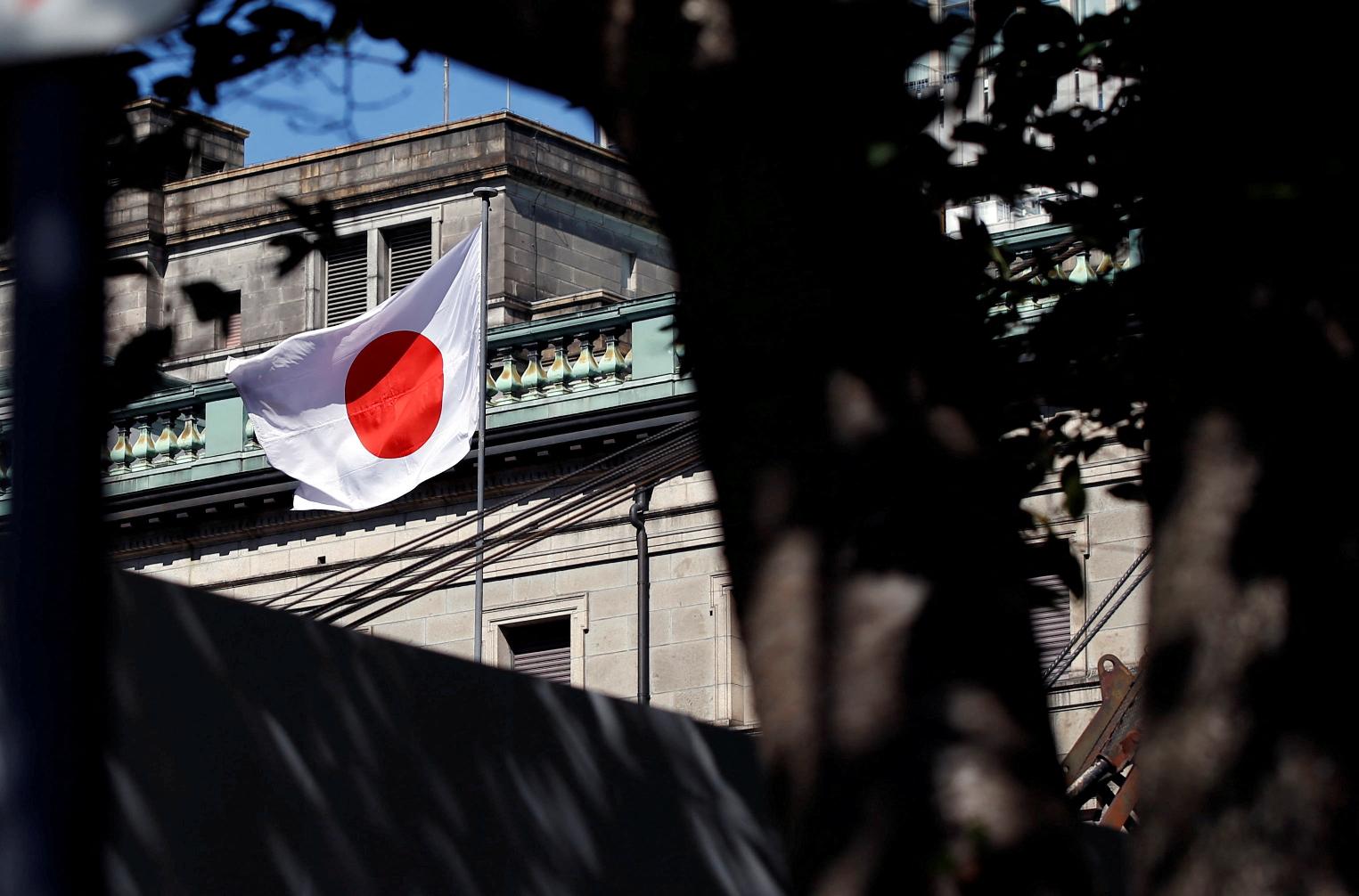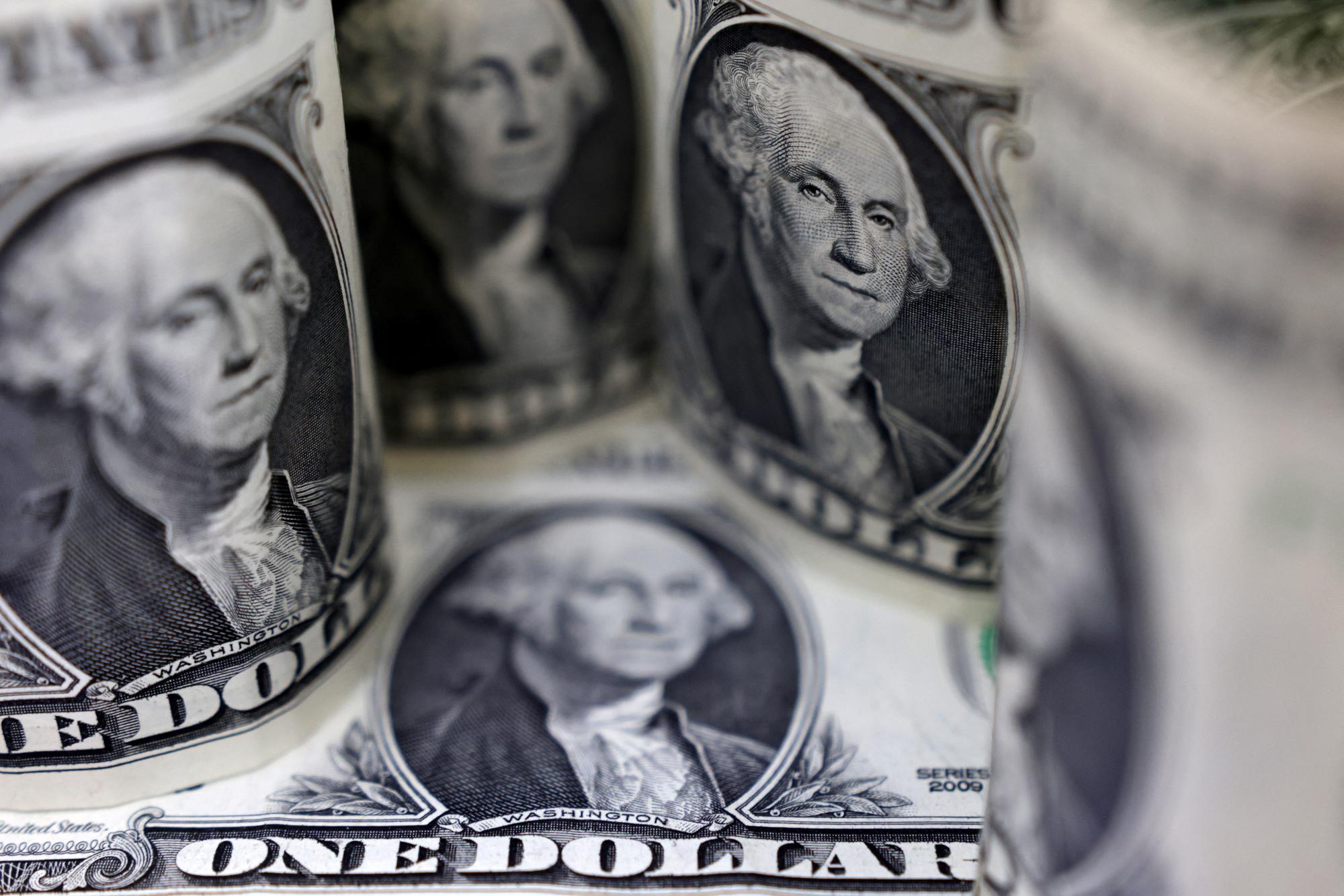
2024-09-05 03:28
No change to BOJ's stance of eyeing steady rate hikes Rate hike plan not without qualification, Takata says Rate hike can come only if market rout doesn't hurt firms Japan may see renewed wave of price hikes, says Takata KANAZAWA, Japan, Sept 5 (Reuters) - The Bank of Japan must stay on course to raise interest rates further but tread carefully to ensure volatile markets do not badly hurt businesses, its board member Hajime Takata said on Thursday, signalling his caution over hiking rates too soon. Takata said the central bank will raise interest rates in several stages if economic and price developments move in line with its forecast, echoing last month's comments by governor Kazuo Ueda. But he said any rate hikes will be conditional on volatile markets not discouraging companies from boosting spending and increasing wages. "Obviously, our basic stance is to adjust the degree of monetary support if our economic and price forecasts are achieved," Takata told a news conference, reiterating the BOJ's long-term plan to raise interest rates. "But that stance is not without qualification. If market developments emerge as a risk to the economy, we need to take that into account," he said, stressing the need to scrutinise at each policy meeting how market moves were affecting corporate activity. Takata said the BOJ had no preset idea in mind on how quickly and how much it would eventually raise rates, arguing that it must spend "plenty of time" to gauge economic and market developments. "The stock and currency market saw big volatility in early August and the fallout continues. As such, we need to scrutinise market developments and their impact for the time being," Takata said in a speech to business leaders in the city of Kanazawa. INFLATION ALSO A RISK Mounting unease over the U.S. economic outlook is stoking global markets volatility, with Japan's broad Topix share gauge plunging 3.7% on Wednesday in its biggest daily drop since the Aug. 5 market rout. The August market sell-off prompted deputy governor Shinichi Uchida to say the BOJ won't hike rates when markets are unstable. In a historic step towards ending a massive decade-long monetary easing campaign, the BOJ ditched negative interest rates in March and raised short-term rates to 0.25% in July on the view the economy was making progress toward durably achieving its 2% inflation target. Governor Ueda has signalled the bank's readiness to raise rates further if inflation stays around 2% in coming years accompanied by solid wage gains, as it currently projects. The BOJ's plan to keep raising rates comes at a time when many other central banks are beginning to ease policy after an aggressive tightening phase to deal with red-hot inflation. The difference in monetary policy stance between that of the BOJ and other central banks could cause market turbulence, Takata said. "As such, we must carefully monitor domestic and overseas developments for the time being," he said. Takata also warned of the potential risk of an overshoot in inflation as companies become more keen than before about passing on rising costs through price hikes. "We must scrutinise without any pre-set idea the chance of Japan seeing another wave of price hikes toward the latter half of the current fiscal year," he said in the speech. Data released on Thursday showed Japan's inflation-adjusted wages rose for two consecutive months in July, underscoring the BOJ's view that rising pay will support consumption and enable firms to keep hiking prices. Takata offered few clues on how he saw the level of Japan's neutral rate of interest - or the level that neither cools nor stimulates the economy. That rate is crucial to determining how far the BOJ could eventually raise rates. "We shouldn't raise our policy rate with a set neutral rate in mind," as it was hard to pin down its exact level, he said. A former bond strategist, Takata has voted for the BOJ's policy shifts, and is considered by markets as neutral to slightly hawkish on monetary policy. Sign up here. https://www.reuters.com/markets/asia/boj-must-raise-rates-if-firms-keep-spending-says-board-member-takata-2024-09-05/

2024-09-05 00:45
Super Typhoon Yagi expected to make landfall in China on Friday Yagi is world's second-most powerful storm in 2024 by wind speed Southern provinces Hainan, Guangdong brace for Yagi's arrival HONG KONG, Sept 5 (Reuters) - Southern Chinese provinces and cities braced for the arrival of super typhoon Yagi, shutting schools and postponing flights ahead of its expected landfall along Hainan's subtropical coast in what could be the most powerful storm to hit China in years. Yagi is the Japanese word for goat and for the constellation of Capricornus, a mythical creature that is half goat, half fish. It has more than doubled its strength since devastating northern Philippines earlier this week. Packing maximum sustained winds of 209 kph (130 mph) near its eye, Yagi registers as the world's second-most powerful tropical cyclone in 2024 so far, after the Category 5 Atlantic hurricane Beryl. Typhoons are becoming stronger, fuelled by warmer oceans, amid climate change, scientists say. Last week, Typhoon Shanshan slammed into southwestern Japan, the strongest storm to hit the country in decades. Yagi strengthened into a super typhoon on Wednesday night and was around 500 km (300 miles) southeast of the city of Zhanjiang in Guangdong province on Thursday afternoon. Authorities had raised the typhoon alert to the highest level. It is expected to move at a speed of 10-15 kmh (6-9 mph) bringing torrential rains to the southern coastal areas of Guangdong and Hainan island. Yagi is due to further strengthen and make landfall along the coast from Qionghai in Hainan to Dianbai, Guangdong from the afternoon to the night of Sept 6. Trains and boats suspended operations in Hainan on Thursday morning, while many schools across southern China, including in the financial hub of Hong Kong and gambling hub Macau were shut. Hong Kong said it would issue its third-highest typhoon signal, 8, on Thursday at 6.40 p.m., which will shut many businesses and reduce transport in the special administrative region. The city's weather observatory said intense rain bands would affect the territory later on Thursday with heavy showers to continue on Friday. Several flights due to leave and arrive from Hong Kong's international airport on Friday have been cancelled. If signal 8 remains in place on Friday morning, the city's stock exchange will close. GUANGDONG, HAINAN Guangdong province upgraded its emergency response level to the highest for strong wind, while the nearby gambling hub of Macau said it would raise its typhoon signal, like Hong Kong, between 8pm-11pm on Thursday. The main bridge linking Hong Kong with Macau and Zhuhai in Guangdong will be closed on Thursday evening as authorities shut the world's longest sea crossing until further notice. All inbound and outbound flights from Hainan's Haikou airport would be suspended from Thursday at 8pm until Friday midnight, local authorities said, as they closed beaches and coastal tourist attractions. Super typhoon Yagi's projected landfall in Hainan is rare, as most typhoons landing on the duty free island are classified as weak. From 1949 to 2023, 106 typhoons landed in Hainan but only 9 were classified as super typhoons. At least 13 people were killed in the Philippines earlier this week due to Yagi. Sign up here. https://www.reuters.com/world/china/southern-china-braces-super-typhoon-yagi-2024-09-05/

2024-09-05 00:40
Concern over US growth underpins rate cut expectations Market focuses on Friday's US jobs report Options markets preparing for large currency swings NEW YORK, Sept 5 (Reuters) - The U.S. dollar eased against most major currencies on Thursday in choppy trading as investors braced for Friday's U.S. payrolls report, which could shape the path of interest rate cuts from the Federal Reserve. The dollar has come under pressure in recent sessions as signs of slowing growth in the U.S. economy have lifted the chances of the Fed cutting rates with more urgency. Fed Chair Jerome Powell last month endorsed an imminent start to interest rate cuts in a nod to concern over a softening in the labor market. Data on Thursday showed the number of Americans filing new applications for jobless benefits declined last week as layoffs remained low. The report helped allay fears that the labor market was deteriorating, after data released in the previous session showed U.S. private jobs growth hitting a 3-1/2-years low in August. Economists surveyed by Reuters expect an increase of 165,000 U.S. jobs in August, up from a rise of 114,000 in July. "There's this looming sense that a downturn in the economy is coming, but these latest numbers don't show that," Adam Button, chief currency analyst, at Forexlive in Toronto, said. "I think the market is flip-flopping between 25 and 50 basis points on every data point," Button said. Markets are pricing in a 59% chance of a 25 basis points cut when the Fed meets on Sept. 17 and 18, with a 41% probability of a 50 bps cut, the CME FedWatch tool showed. In all, some 100 bps of cuts are priced for the year. The euro was 0.2% higher against the dollar at $1.1106, a one-week high. The Dollar Index , which measures the U.S. currency's strength against six major peers, was 0.2% lower at 101.08. Against the Japanese yen , the dollar fell 0.3% to 143.35 yen, a one-month low. Safe haven demand and expectations for imminent rate hikes from the Bank of Japan have helped lift the Japanese currency in recent sessions. The options market shows traders are preparing for potentially big moves in currencies on Friday. Overnight implied options volatility - a measure of demand for protection - is at its highest since the banking crisis of March 2023 for the euro and at its highest in a year for the yen . The pound was 0.2% higher at $1.31715 on Thursday. The Bank of England meets in two weeks to set monetary policy. Right now, the derivatives market shows traders see very little chance of a rate cut this month, but a quarter-point cut is fully priced in for November . The Australian dollar reversed earlier losses to trade up 0.1% on the day, drawing support from a still-hawkish Reserve Bank of Australia. With investors avoiding riskier assets, cryptocurrencies slipped on Thursday. Bitcoin fell 2.6% to $56,510 and ether slipped about 2.8% to $2,387. Sign up here. https://www.reuters.com/markets/currencies/dollar-wobbles-rising-bets-outsized-fed-rate-cut-2024-09-05/

2024-09-05 00:26
LONDON, Sept 5 (Reuters) - Oil firmed on Thursday, edging up from multi-month lows on a possible delay to output increases by OPEC+ producers and a decline in U.S. inventories, though the gains were capped by persistent demand concerns. Figures from the American Petroleum Institute (API) showed U.S. crude oil inventories fell by 7.431 million barrels last week, far exceeding the 1 million barrel draw expected by analysts in a Reuters poll. "There is a pause of breath and light reprieve for oil prices," said PVM analyst John Evans, citing the API report's findings. Brent crude for November rose 53 cents, or 0.7%, to $73.23 a barrel by 1114 GMT after touching its lowest since December on Wednesday. U.S. West Texas Intermediate crude for October was up 41 cents, or 0.6%, at $69.61. Further support came from discussions between the Organization of the Petroleum Exporting Countries (OPEC) and allies led by Russia, known collectively as OPEC+, about delaying output increases due to start in October, sources told Reuters on Wednesday. OPEC+ had been ready to proceed with an output increase of 180,000 barrels per day (bpd) in October, part of plans for a gradual unwinding of its most recent cuts of 2.2 million bpd. However, continued soft demand in China and the potential end of a dispute halting Libyan oil exports has pushed the group to reconsider. Official U.S. oil stocks data from the Energy Information Administration (EIA) is due at 1430 GMT. Financial markets were also awaiting further U.S. macroeconomic indicators due later on Thursday, including jobs data. Sign up here. https://www.reuters.com/business/energy/oil-steady-investors-weigh-weak-demand-potential-delay-opec-output-hike-2024-09-05/

2024-09-05 00:19
Sept 4 (Reuters) - The head of the U.N.'s nuclear watchdog said a cooling tower at Ukraine's Russian-occupied Zaporizhzhia nuclear power plant had been badly damaged in a fire last month and would probably have to be demolished. Rafael Grossi, Director General of the International Atomic Energy Agency, made the comment on Wednesday during his fifth visit to the plant, which was seized by Russian forces soon after Russia's February 2022 invasion of Ukraine. Moscow and Kyiv have regularly accused each other of attacking the plant and risking a nuclear accident. Grossi posted a video on the messaging platform X assessing the damage while standing inside the cooling tower. "Until today, we hadn't been able to get to this point, high up in the tower, so we can assess in a much better way the damage that occurred," Grossi, wearing a helmet and bullet-proof vest, said in the video. "This big structure is not usable in the future, so it will probably be demolished at some point." Fire broke out in the tower on August 11, with Russia and Ukraine accusing each other of actions that triggered the blaze. Grossi at the time described the incident as one of numerous "reckless attacks", but did not attribute blame. The Zaporizhzhia plant in southeastern Ukraine, Europe's largest with six reactors, has been in "cold shutdown" and produces no electricity. It requires outside power to keep nuclear material cool and prevent an accident. The video also showed Grossi inspecting a pumping station to provide water, in shorter supply after the destruction last year of southern Ukraine's Kakhovka dam. He also visited a nuclear fuel storage facility. Grossi met Ukrainian President Volodymyr Zelenskiy in Kyiv on Tuesday and said matters were "very fragile" at Zaporizhzhia, where IAEA inspectors have been stationed since mid-2022. Grossi last week visited the Kursk nuclear plant in southern Russia and said there was a danger of a nuclear accident there as Ukrainian forces, which launched an incursion into Kursk region last month, were 40 km (25 miles) away. Sign up here. https://www.reuters.com/world/europe/iaea-head-says-tower-ukraines-zaporizhzhia-station-requires-demolition-after-2024-09-05/

2024-09-05 00:09
BENGALURU, Sept 5 (Reuters) - Recent U.S. dollar weakness will stall in the coming three months despite financial market traders ramping up bets for Federal Reserve interest rate cuts, according to a majority of foreign exchange strategists surveyed by Reuters. After surging about 5% against a basket of major currencies by midyear, the greenback (.DXY) , opens new tab lost almost all its gains as interest rate futures started pricing in about 100 basis points of Fed easing this year, nearly double June's expectations. That was driven in part by July labor market data showing signs of a slowdown, bolstered by reassurance from Fed chair Jerome Powell in his latest speech at Jackson Hole hinting rate cuts were coming. Interest rate futures markets have fully priced in a 25 bp Fed rate cut this month, with around 40% priced in for another 25 bp reduction, suggesting a significant risk of a half-point cut. "There's probably going to be a bit of volatility in markets in the next week or two. Payrolls data will ultimately determine whether the Fed goes 50 or 25 on September 18, and that will drive the short-run direction of the dollar," said Shaun Osborne, chief currency strategist at Scotiabank. Economists in a separate Reuters poll expected data due on Friday to show 160,000 job additions in August, a rebound from July's 114,000 increase and the unemployment rate dropping marginally to 4.2%. The euro was forecast to fall only about 0.5%, from around $1.11 currently to $1.10 by end-November, according to median forecasts in the Reuters Aug. 30-Sept. 4 of 76 FX strategists. It was then predicted to only rise back to $1.11 by end-February and to $1.12 in a year, suggesting limited gains for the common currency. "We would not push back too hard against the dollar’s soft August - the dollar starts from a position of being highly valued, the Fed can and looks likely to adjust real rates faster than other major central banks," said Kamakshya Trivedi, head of global FX, rates and EM strategy at Goldman Sachs. "We would, however, push back against significant further weakening in the dollar without a shift in relative growth and asset return prospects." The latest positioning data from the Commodity Futures Trading Commission, however, showed speculators had flipped their bets to net short on the greenback for the first time since February. A near-70% majority, 45 of 66, who answered an additional question said the dollar was likely to stay around the same level or rebound. The remaining 21 said it would weaken further. "Market pricing of 100 basis points of rate cuts between now and the end of the year is pretty aggressive and at this point, hard to see, given there's still pretty decent momentum behind the U.S. economy," added Scotiabank's Osborne. A separate Reuters survey of economists, more consistent in their outlook through the year, predicted a 25 bp rate cut in each of the three remaining Fed meetings this year. "We think recent dollar weakness was overdone. Yes, the economy isn't great, but apart from maybe the unemployment rate, there are very few indicators that point to a recession. Most of them point to sluggish, and we don't think the Fed will do 50 on sluggish," said Steve Englander, global head of G10 FX research at Standard Chartered. Among other major currencies, the Japanese yen , which has gained about 12% against the dollar from a 38-year low in July due to a rapid unwinding of carry trades and a rate hike from the Bank of Japan, would be one of the biggest gainers, the poll showed. It was expected to rise nearly 4% to about 139.67 per dollar in a year. (Other stories from the September Reuters foreign exchange poll) Sign up here. https://www.reuters.com/markets/currencies/dollar-weakness-stall-markets-over-egg-fed-rate-cuts-2024-09-05/
